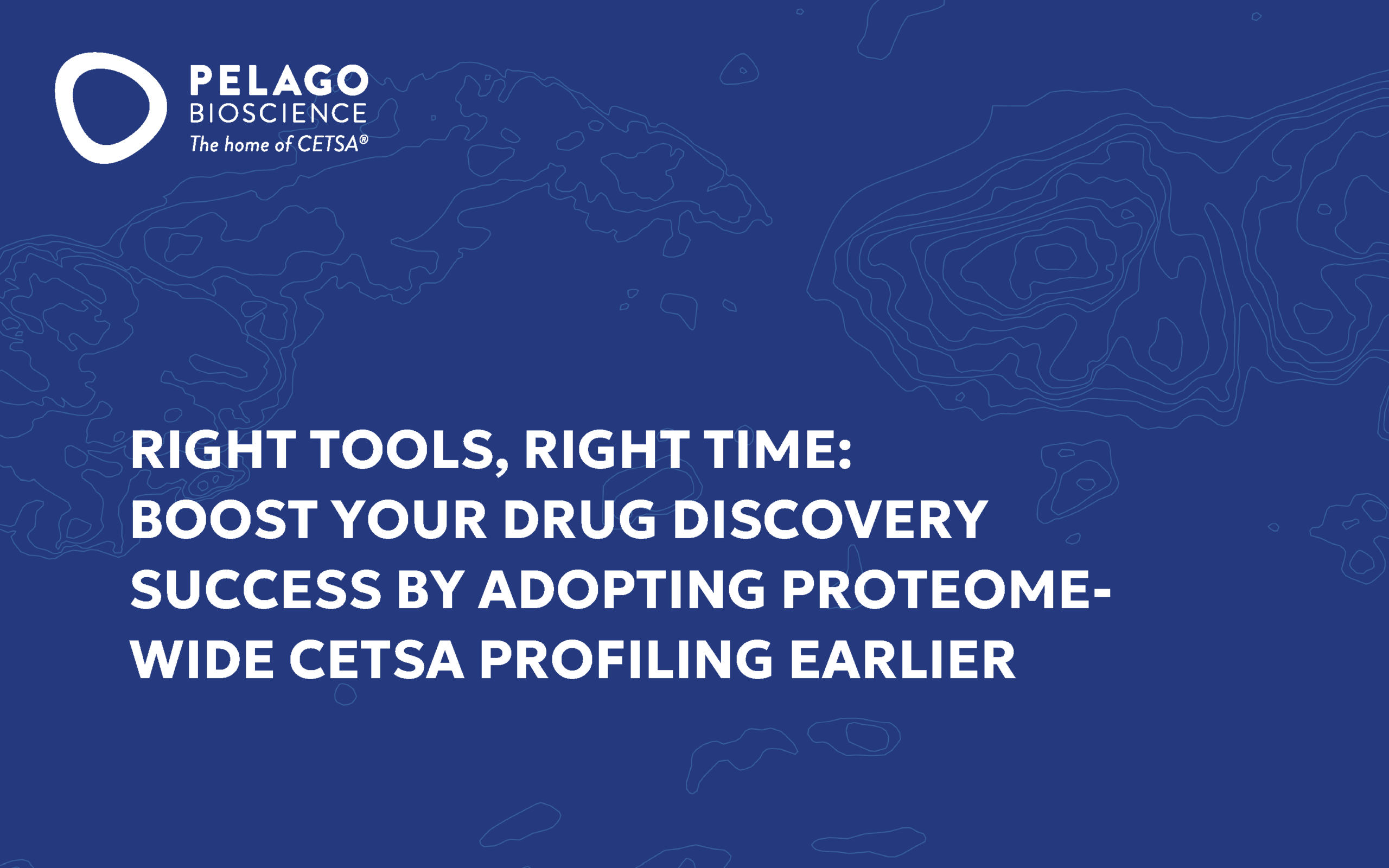At Pelago Bioscience, we work with drug discovery teams to optimize their approach to target identification and mechanism of action (MoA) elucidation. As drug discovery grows increasingly complex and resource-intensive, one theme has become clear: applying proteome-wide CETSA® profiling at an earlier stage can dramatically improve your pipeline’s efficiency and success rate.
Our latest e-book, “Right tools, right time,” explores how early use of CETSA profiling—especially in combination with mass spectrometry—enables physiologically relevant, proteome-wide insights that traditional approaches often miss. Below, we summarize key findings from the e-book and explain why this methodology is gaining traction across the industry.
The evolving challenge of target identification
Target identification remains a critical bottleneck in both hypothesis-driven and phenotypic drug discovery. Conventional techniques, such as chemoproteomics or functional genomics (e.g., CRISPR screening), each present specific limitations: reliance on chemical probes, artificial cellular systems, or insufficient coverage of biologically relevant targets.
Proteome-wide CETSA profiling, by contrast, offers a label-free, unbiased approach to measuring drug-target engagement directly in live cells or tissue. By integrating CETSA with quantitative mass spectrometry, researchers can simultaneously analyze thermal stability shifts across thousands of proteins, revealing primary target interactions, off-target effects, and broader pathway dynamics.
Physiological relevance from day one
One of the most compelling advantages of CETSA is that it interrogates compound binding in an unmodified cellular environment. This minimizes artifacts and yields insights more predictive of in vivo outcomes. Unlike chemoproteomics, CETSA does not require time-consuming probe development or compound derivatization, enabling earlier decision-making and faster progression through hit-to-lead stages.
Applying CETSA profiling early in drug discovery empowers teams to:
- Characterize compound-target interactions in a native biological context
- Reveal novel targets and off-target liabilities
- Elucidate MoA in phenotypic screens where targets are unknown
- Quantify compound selectivity and pathway modulation
These capabilities are particularly valuable in de-risking drug candidates and improving translational relevance.
Evidence in action: Case studies from the field
The e-book details several case studies that illustrate the impact of CETSA profiling:
- Target deconvolution for phenotypic hits: Researchers identified novel PIP4K targets of a Ras-pathway-selective anticancer compound, shedding light on its selective cytotoxicity.
- Off-target safety profiling: CETSA revealed the unintended binding of kinase inhibitors to ferrochelatase (FECH), explaining adverse effects like phototoxicity.
- MoA clarification: Long-standing antimalarials were shown to bind purine nucleoside phosphorylase (PNP)—a target not previously linked to their pharmacological activity.
- Biomarker discovery: CETSA uncovered ECM29 as a predictive biomarker of relapse-free survival in breast cancer patients treated with palbociclib.
- Translational model refinement: Tissue-TPP (thermal proteome profiling in vivo) enabled organ-specific assessment of drug effects in preclinical models.
Each example reinforces the method’s utility in providing deeper, faster insights that guide more informed research decisions.
Enhancing discovery with the right tools at the right time
The early application of proteomics in drug discovery—particularly CETSA combined with mass spectrometry—offers unmatched potential to accelerate progress while maintaining scientific rigor. By deploying CETSA profiling at the beginning of a program, researchers can reduce timelines, lower attrition risks, and ensure that efficacy and safety are better understood from the outset.
To explore these concepts in more detail, including additional data and expert commentary,
download the full e-book: “Right tools, right time: Boost your drug discovery success by adopting proteome-wide CETSA profiling earlier.”







